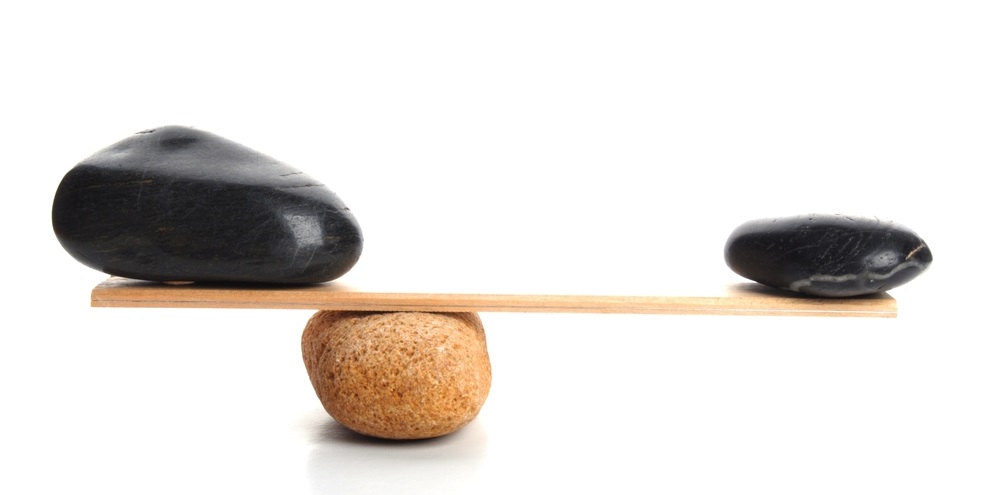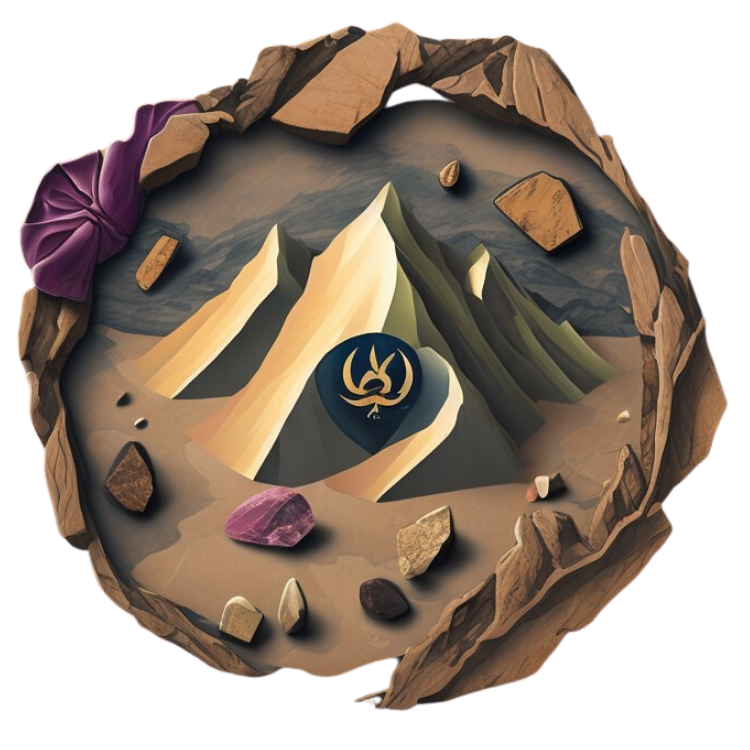Understanding Rock Weight and the Factors that Influence It
Click here to see our crystal hunting maps
Rock weight, also known as rock mass, unit weight, bulk density, or specific gravity, is the mass of a rock per unit volume. It is an important property for various applications, such as engineering, geology, and mining. Knowing how much a rock weighs and what factors influence its weight is essential for ensuring safety, stability, and responsible resource management.
However, rock weight is not a constant or uniform value. It can vary significantly depending on the type, size, shape, and location of the rock. In this article, we will explore the main factors that affect rock weight, such as density, porosity, water content, and pressure. We will also discuss how to determine the rock type and density, and how to calculate and approximate the weights of rocks.
Importance of Understanding Rock Weight
Understanding rock weight and the factors that influence it is essential for various fields and purposes, such as designing structures, exploring resources, and extracting minerals. For example, rock weight can affect the stability of structures, such as buildings, bridges, dams, and tunnels, by influencing the load-bearing capacity, the deformation, and the failure modes of the rock.
Rock weight can also affect the distribution of resources, such as oil, gas, coal, and metals, by influencing the migration, accumulation, and extraction of the fluids or solids within the rock. Rock weight can also affect the feasibility of extraction, such as drilling, blasting, or mining, by influencing the energy consumption, the equipment performance, and the environmental impact of the operations.
Factors that Affect the Weight of Rocks
-
Density
Density is a measure of how tightly packed the atoms or molecules of a substance are. It influences the weight of a rock by determining how much mass is contained in a given volume. The higher the density, the heavier the rock.
Different types of rocks have different densities, depending on their composition and formation. Generally, igneous rocks are denser than sedimentary rocks, which are denser than metamorphic rocks. For example, granite, an igneous rock, has a density of about 2.7 g/cm³, while limestone, a sedimentary rock, has a density of about 2.3 g/cm³, and marble, a metamorphic rock, has a density of about 2.8 g/cm³¹.
Density can also change due to various processes, such as temperature, melting, crystallization, or chemical reactions. For example, when a rock is heated, its atoms or molecules vibrate faster and occupy more space, reducing its density. When a rock melts, its liquid state has a lower density than its solid state. When a rock crystallizes, its atoms or molecules are arranged in a more orderly and compact way, increasing its density. When a rock undergoes a chemical reaction, its composition and structure may change, affecting its density.
-
Porosity
Porosity is a measure of how much space or voids exist within a rock. It influences the weight of a rock by determining how much volume is occupied by air or gas. The higher the porosity, the lighter the rock.
Different types of rocks have different porosities, depending on their texture and origin. Generally, clastic rocks, which are formed from fragments of other rocks, have higher porosities than organic rocks, which are formed from the remains of plants or animals, which have higher porosities than chemical rocks, which are formed from the precipitation of minerals from solutions. For example, sandstone, a clastic rock, has a porosity of about 10-35%, while coal, an organic rock, has a porosity of about 5-15%, and limestone, a chemical rock, has a porosity of about 1-20%².
Porosity can also change due to various processes, such as compaction, cementation, dissolution, or fracturing. For example, when a rock is buried under layers of sediments, its grains are squeezed together, reducing its porosity. When a rock is cemented by minerals that fill the spaces between its grains, its porosity is decreased. When a rock is dissolved by water or acid, its porosity is increased. When a rock is fractured by stress or pressure, its porosity is increased.
-
Water Content
Water content is a measure of how much water is present in the pores or cracks of a rock. It influences the weight of a rock by adding mass to the rock. The higher the water content, the heavier the rock.
Different types of rocks have different water contents, depending on their moisture condition and environment. Generally, dry rocks, which have no water in their pores or cracks, have lower water contents than moist rocks, which have some water in their pores or cracks, which have lower water contents than saturated rocks, which have their pores or cracks filled with water, which have lower water contents than submerged rocks, which are immersed in water. For example, a dry sandstone has a water content of about 0%, while a moist sandstone has a water content of about 5%, a saturated sandstone has a water content of about 25%, and a submerged sandstone has a water content of about 30%³.
Water content can also change due to various processes, such as precipitation, evaporation, infiltration, or drainage. For example, when a rock is exposed to rain or snow, its water content is increased. When a rock is exposed to sun or wind, its water content is decreased. When a rock is permeable, water can seep into or out of its pores or cracks, affecting its water content. When a rock is connected to a water source or a water outlet, water can flow into or out of its pores or cracks, affecting its water content.
-
Pressure
Pressure is a measure of how much force is exerted on a rock by the surrounding material. It influences the weight of a rock by compressing or expanding the rock. The higher the pressure, the heavier the rock.
Different types of rocks have different pressures, depending on their depth and location. Generally, surface rocks, which are exposed to the atmosphere, have lower pressures than subsurface rocks, which are buried under layers of soil or rock, which have lower pressures than deep rocks, which are located in the mantle or the core of the earth. For example, a surface rock has a pressure of about 0.1 MPa, while a subsurface rock at a depth of 1 km has a pressure of about 30 MPa, and a deep rock at a depth of 100 km has a pressure of about 3000 MPa⁴.
Pressure can also change due to various processes, such as erosion, deposition, burial, or uplift. For example, when a rock is eroded by water or wind, its pressure is decreased. When a rock is deposited by gravity or sedimentation, its pressure is increased. When a rock is buried by tectonic movements or volcanic eruptions, its pressure is increased. When a rock is uplifted by faulting or folding, its pressure is decreased.
-
Rock Size
One of the factors that affect rock weight is the size of the rock. The size of a rock can be measured by its dimensions, such as length, width, height, or diameter, or by its volume, such as cubic meters, liters, or gallons. The size of a rock influences the weight of a rock by determining how much space the rock occupies. The larger the size, the heavier the rock.
However, the size of a rock is not the only factor that determines the weight of a rock. The weight of a rock also depends on the density of the rock, which is the mass of the rock per unit volume. The density of a rock can vary depending on the type, shape, and location of the rock, as we will see in the following sections.
-
Rock Type
Another factor that affects rock weight is the type of the rock. The type of rock can be classified by its composition and formation, such as igneous, sedimentary, or metamorphic. The type of rock influences the weight of a rock by determining the density of the rock, which is the mass of the rock per unit volume. The density of a rock depends on the composition and formation of the rock, which affects how tightly packed the atoms or molecules of the rock are. The higher the density, the heavier the rock.
Different types of rocks have different densities, depending on their composition and formation. Generally, igneous rocks are denser than sedimentary rocks, which are denser than metamorphic rocks. For example, granite, an igneous rock, has a density of about 2.7 g/cm³, while limestone, a sedimentary rock, has a density of about 2.3 g/cm³, and marble, a metamorphic rock, has a density of about 2.8 g/cm³.
Density can also change due to various processes, such as temperature, melting, crystallization, or chemical reactions. For example, when a rock is heated, its atoms or molecules vibrate faster and occupy more space, reducing its density. When a rock melts, its liquid state has a lower density than its solid state. When a rock crystallizes, its atoms or molecules are arranged in a more orderly and compact way, increasing its density. When a rock undergoes a chemical reaction, its composition and structure may change, affecting its density.
How to Determine Rock Type and Density

To determine the rock type and density, one can use various methods, such as observation, measurement, or testing.
Identifying Rock Types:
- Visual Inspection:
- Color: Notice the rock's overall color and any variations within it. Some colors are associated with specific minerals (e.g., red indicates iron oxides).
- Grain size and texture: Observe the size and distribution of the individual grains or crystals within the rock. Are they coarse or fine, smooth or rough?
- Mineralogy: Use a hand lens to identify any visible minerals, like quartz, feldspar, or mica.
- Presence of fossils: Certain rock types, like sedimentary rocks, may contain fossilized remains of past life forms.
- Streak Test: Scratch the rock on a streak plate (unglazed porcelain tile). The color of the resulting streak can help identify some minerals.
- Acid Test: Place a small drop of dilute hydrochloric acid on the rock. If it fizzes, the rock likely contains carbonate minerals like calcite. (Caution: Wear gloves and eye protection when handling acid).
- Consulting reference resources: Use field guides, online resources, and geological charts to compare your observations to known rock types.
Related Topic: A Comprehensive Guide: How to Identify Minerals and Rocks for Rockhounding Enthusiasts
Determining Rock Density:
- Direct Measurement: This method involves calculating the density using the formula: Density = Mass / Volume
- Mass: Measure the rock's weight using a balance (in grams)
- Volume: There are two approaches:
- Water displacement: Fill a graduated cylinder with water, note the initial volume. Submerge the rock completely, and record the new volume. The difference is the rock's volume.
- Geometric measurement: For rocks with regular shapes, use appropriate formulas for length, width, and height to calculate the volume.
- Estimating Density: Refer to tables or charts that provide average density values for different rock types. This method gives a general idea but might not be as precise as direct measurement.
To approximate the weight of a rock, one can use some rules of thumb, such as:
- A cubic meter of rock weighs about 2.5 tons on average, depending on the type and density of the rock.
- A liter of rock weighs about 2.5 kilograms on average, depending on the type and density of the rock.
- A gallon of rock weighs about 20 pounds on average, depending on the type and density of the rock.
These rules of thumb can be useful for quick estimates, but they are not very accurate, as they do not account for the variations in the type, density, and shape of the rock.
Conclusion
In conclusion, rock weight is the mass of a rock per unit volume, and it is an important property for various applications, such as engineering, geology, and mining. However, rock weight is not a constant or uniform value. It can vary significantly depending on the type, size, shape, and location of the rock. The main factors that affect rock weight are density, porosity, water content, and pressure. These factors can change due to various processes, such as temperature, melting, crystallization, chemical reactions, compaction, cementation, dissolution, fracturing, precipitation, evaporation, infiltration, drainage, erosion, deposition, burial, or uplift. To determine the rock type and density, one can use various methods, such as observation, measurement, or testing. To calculate and approximate the weights of rocks, one can use formulas, tables, or rules of thumb.
Understanding rock weight and the factors that influence it is essential for various fields and purposes, such as designing structures, exploring resources, and extracting minerals. It can also help us appreciate the diversity and complexity of the natural world. For further research or exploration on the topic, we suggest reading more about the specific properties and processes of different types of rocks and conducting experiments or measurements to observe and compare their weights.
